
13218307041
Hands on Homeschool PLAY AND LEARN Information For Parents Early Learning IncredibleKids.com
Supporting Early Learning
As a former private school administer, can tell you that I would consider any alternative to public school right now. I would struggle with the vaccination issues as well as the risk of exposure. But I am most concerned with the way they are headed in there curriculum choices and the growing dependancy.
So, I totally understand your concern and motivation to look at different options.
Early learning can develop a great foundation for basic learning skills that will make a difference in their entire educational journey.
My favorite curriculums are Waldorf, Montessori, Tinkergarten, and multi-sensory unit studies. For early learning - Mrs. Plemon's-Babies, Tots, Preschool, Kindergarten and Teaching 2 and 3 year Olds
The school that I founded used a multiple intelligence curriculum that I loved designing the curriculum for. My favorite parts of that approach was the recognition that curriculum revisits the same topics several times through out their school years. It is just presented with more details as they get older. It also recognizes that kids with Dyslexia or difficulty reading can learn and excel without a textbook.
As a parent, you want the best for your children, and this includes their education. Some parents assume that homeschooling requires superhuman patience or a special degree, but it is not as hard as you think to provide your child a quality education. Although homeschooling may not work for everyone, there are academic benefits, plus a whole lot more.
HOMESCHOOL CURRICULUMS THAT MANY FAMILIES HAVE LOVED
Whether you have committed to homeschooling this year, planning to supplement alongside your child’s virtual learning platform, or are still exploring your options, we’ve gathered five popular homeschool curriculums that cover a wide range of educational philosophies and approaches. From classic, low-cost homeschool curriculum to nature-based, hands-on learning, these are popular picks for the best homeschool curriculum for all types of families. And be sure to keep scrolling to see what items made the list for must-have homeschooling supplies!
The Good and The Beautiful
Highlights: Faith and Nature-based, family style learning
The Good and The Beautiful homeschool curriculum by Jenny Phillips is designed to foster a true love of learning and instill high moral character. The curriculum is designed to make homeschooling less expensive, less overwhelming and bring joy back into learning. The program includes reading, language arts, science, math, and more.
Ages: Preschool – 8th Grade
Support Resources for Parents: No daily prep just open book and follow the instructions. There is also a book list and library for additional learning.
Blossom and Root
Highlights: Nature-based, hands-on learning
Blossom and Root is a creative, nature-based, secular homeschool curriculum. My family has embraced this play-based homeschool curriculum because it’s a flexible, hands-on curriculum with a focus on nature, literature, STEM, and art! Best of all, learning progresses naturally in a week by week, easy to follow schedule of activities that cover all areas of learning and development.
Ages: Preschool – 4th Grade
Support Resources for Parents: Book Seeds (stand-alone mini-units), Blossom and Roots Facebook support group, supplies list for each age group, and a fabulous Pinterest page with lots of great ideas + inspiration.
Mother Goose Time
Highlights: Research-based, early-learning curriculum
Spend less time on prep, more time on curious discovery with your children. Each curriculum system includes award-winning materials organized by day and ready to go. The Mother Goose Time curriculum system uniquely weaves 33 research-based skills into playful games and projects. As children participate, they naturally grow in all areas of development, including social-emotional, physical, language, and cognitive development.
Ages: 3 months – 5 years old
Support Resources for Parents: Lesson plans + materials delivered to your door, access to member resources such as assessment tools, and an online shop to purchase additional materials
Other Goose
Highlights: Research-based, early-learning curriculum
Other Goose offers research-based early learning prompts that guide you through over 250 simple, teachable moments with your kids ages 2-7. Other Goose offers super simple, no-fuss, easy to implement ideas and lessons.
Ages: 2 to 7 years old
Support Resources for Parents: Online marketplace with books and educational toys and workshops for parents.
Time4Learning
Highlights: Traditional, online homeschool curriculum
Time4Learning is a virtual homeschool curriculum broken up by grades and subjects. It provides parents with an easy to follow, easy to implement, and completely digital homeschool curriculum. The program is student-led, which means children progress through the lessons at their own pace while parents “assign” daily courses and lessons.
Ages: PreK – 12th Grade
Support Resources for Parents: Printable lesson plans, progress reports, access to parent forums, a Facebook Families Group, and helpful customer support team.
Living Montessori Now
Living Montessori Now offers a plethora of activities, materials, and supplies for families who prefer the Montessori approach to homeschooling. With monthly themed activities + unit studies, parents can build a schedule that best fits their children’s learning style or follow the pre-planned weekly schedule of activities.
Ages: Preschool – 5th Grade
Support Resources for Parents: Free printables + Montessori video lessons, monthly newsletter, and an online shop to purchase materials.
Torchlight
Highlights: Literature-based curriculum
Torchlight is a unique curriculum that includes hands-on learning, game-schooling, car-schooling, media, and bedtime story recommendations woven into the curriculum to spread out the learning and make it more of a learning lifestyle. Torchlight provides flexibility, allowing families to mold the learning experience to the learner. Torchlight was created to fulfill the idea of the adult learning alongside the child, helping guide them, teach them to find answers, and ask quality questions.
Ages: PreK- 4th Grade
Support Resources for Parents: Level placement tools to help pick the perfect curriculum based on your child’s skills, add on materials, member resources + Facebook group, and summer learning and unit studies.
Written by local mom, Lauren Cadorin, How to Homeschool on a Budget is a comprehensive guide for new homeschool parents. Be sure to follow her blog, Also Known as Mama for amazing homeschooling tips!
And because setting up a school in your home can be stressful enough, here are a few essential must-have homeschool items.
A Workspace: This can be as simple as the kitchen table, a simple homemade workspace, or an adorable child-sized desk.
Writing Supplies: Dry erase markers, crayons (triangular crayons for preschoolers), markers, pencils, oil pastel crayons, colored pencils.
Basic Art Supplies: Wiki stix, googly eyes, paint, popsicle sticks, pom poms, playdough, glitter, pipe cleaners, stickers, feathers
Still Want More Information
Educational Approaches and Options
Variety of Educational Approaches

Homeschooling allows an educational approach that works best for your family since you can mix and match what works best for each learner. Here is a sampling of educational approaches, although some are more popular than others. You may enjoy further research on these unique educational styles:
Traditional Homeschooling
This is the most common educational approach, and it mirrors the traditional classroom model. Students that work with this approach often follow textbooks and use workbooks and worksheets.
K12 Online School
Online schooling allows your child to learn at home, or wherever there's an internet connection, while enjoying the benefits and support of a school program. They'll receive a high-quality education that's tailored to their needs. K12 also offers offline materials if you prefer. Since they meet state regulation students will receive a diploma.
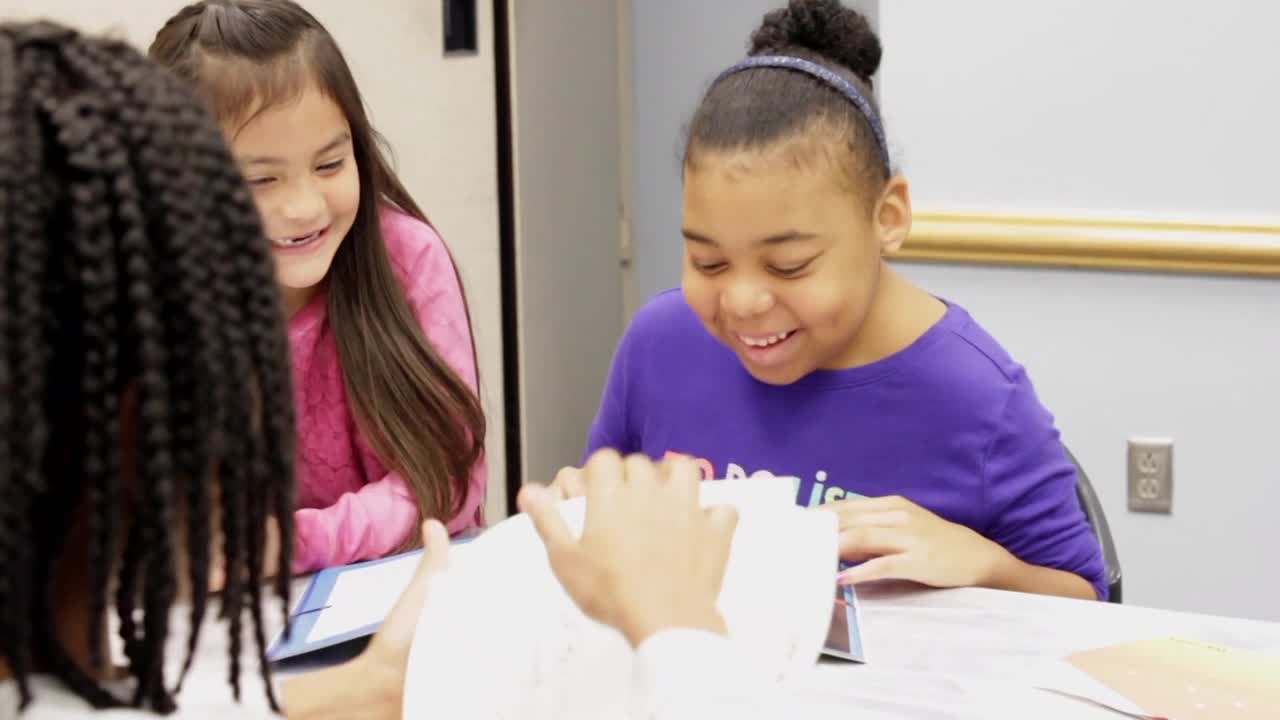
Unit Studies
Wrapping your studies around a certain theme or topic is called the unit study approach. Typically, a unit study will incorporate many subjects such as art, science, language, and more. Unit studies can be used all the time or a few times throughout the year, which provides for a creative break from other bookwork. Because unit study curriculums are a great way to teach a multi-aged group, our family of 13 has enjoyed many unit study projects, including:
World Continents. Older students write reports and create maps, and younger students trace cardboard continents on paper and read engaging picture books about the people who live in faraway places. Everyone memorizes the 7 continents and learns the difference between city, state, country, and continent.
Rivers. Older students study river habitats, compare world rivers, and learn vocabulary. Younger students make maps with construction paper, tackle beginning reader books, and everyone enjoys a field trip to the local lock and dam.
The Science of Flight. Older students document the science of flight, write reports on aviation pioneers and create airplane diagrams. Younger students learn how flight works, study nature’s flying creatures and learn related spelling words. Everyone creates flight-savvy paper airplanes and watches a movie about history’s heroes of flight.
Classical Homeschooling
Classical homeschooling has been around for a long time, and this style involves a three-part approach to education. Its roots go back to the Middle Ages and Renaissance and may involve formal studies of subjects like Latin and logic.
Unschooling
This approach is not the absence of schoolwork. Instead, unschooling is an approach that essentially gives some or most choices of what to learn directly to the student. Are they interested in science? Art? Horticulture? Writing? Unschooling tends to allow the students to direct their learning through what they love.
Road-schooling
Road-schooling happens when families take their homeschooling on the go. Although it is not for everyone, this approach may offer some unique educational opportunities.
Eclectic Approach
Blend a few different approaches that work for you, and you have an eclectic homeschool. This is very common and it can be a great way to accommodate the varying needs of your children.
Montessori
Famous historical educator Maria Montessori had some solid philosophies about the educational development of young learners, and they are still used and loved today.
Charlotte Mason Homeschooling
Charlotte Mason was a famous British educator who believed in the ample use of quality books, outdoor exploration, use of art and music, journaling, and copy work to develop a well-balanced student.
Waldorf Homeschooling
Rudolf Steiner focused his educational theories on the place of a child within the natural world and global community. His ideas were that preschoolers should be given creative, active play with hands-on learning, an elementary school should introduce academic instruction and expand the imagination, and high school instruction should focus on empathy, critical thinking, and community service.
FAQs – Homeschooling
Is homeschooling legal?
Homeschool guidelines and restrictions vary by state.
How does homeschooling work?
Learning at home looks different for each individual family. It is important to start by looking at your state’s requirements to stay within the law. Some states have relaxed requirements, and some states require more. Once you have researched your state’s guidelines, you can start looking for a curriculum.
How do I choose a homeschool curriculum?
There are dozens of high-quality textbooks and curriculum packages, and the most important thing to remember is to choose a curriculum that you will use. Most companies who sell homeschool curriculum allow you to view pages and samples of their material online.
Will my high school student be able to go to college?
Colleges are increasingly recognizing the benefits of welcoming homeschooled students into their institutions. They are typically motivated, persistent and well-rounded students.
Can I homeschool if I am a single parent?
Yes, many single parents homeschool their children.
Do I need a teaching degree to homeschool my children?
No, you do not need a teaching degree to homeschool your children.
Is homeschooling more effective than public school?
The Homeschool Legal Defense Association (HSLDA) has reported that homeschool students achieve a 30% higher GPA than public school students and an average of 15-30% higher grades.
Can I homeschool my preschooler?
Preschool is one of the best times to homeschool your child and get them off to a great start. They can learn their ABCs, how to write their name and other basics. Homeschooling at the preschool level should include learning through lots of play and hands-on exploration.
Is it legal to homeschool my special needs child?
Homeschooling your child with special needs is a great option because even if you are not a special education teacher, you are an expert on your child. Homeschool guidelines vary by state and resources and support for special needs education is readily available.
How many hours a day should I homeschool my child?
A normal homeschool day typically takes less time than a traditional public school day. Although it is different for every family, it may take around one to three hours a day for elementary students, three hours for middle schoolers, and three to four hours a day for high school students.
How can I teach subjects when I am not an expert?
For the elementary levels, you can use a textbook with a teacher’s guide, which will give you all of the guidance you need. When your child starts high school, you can reach out and join local homeschool groups, networks and seek online homeschool support. Remember that it is not expert academic authority that makes a successful homeschooling parent. Reports say that one-on-one learning and simple parental involvement are two of the most crucial components for success.
How can my children participate in extracurricular activities?
Homeschooling families often use the morning for subjects like math, science, social studies, and language, which leaves the afternoons for music, art, sports, and other activities.
What are the health benefits of homeschooling?
When parents were asked about the mental, emotional, and physical health benefits of homeschooling, they answered:
less stress
reduced exposure to germs
healthier food options at home
ample sleep and regular meals
less junk food
healthier self-esteem
sense of family nurture
more positive interactions with siblings
Can I homeschool with an online school program provided by my school district?
There can be confusion about the differences between online public and private school programs. The important thing to consider is who is in charge of your child’s education. An online school with funding from the state is a public online school. Online classes chosen by the student would qualify as online homeschooling. Programs offered by public schools generally do not allow flexibility in curriculum choice or personalized learning.
How do I find homeschooling support?
Facebook is one place to find support in your local area.
Is homeschooling expensive?
Every family has a unique school situation, and costs vary. Most homeschooling families purchase online or offline curriculums along with other books and education supplies. In our family, buying secondhand books and using the local library has cut down on the cost of homeschooling.
Homeschooling and Working While Shaping Amazing Learners by LM Preston
Homeschooling for College Credit: A Parent’s Guide to Resourceful High School Planning by Jennifer Cook DeRosa
The Well-Adjusted Child: The Social Benefits of Homeschooling by Rachel Gathercole
The Writing Revolution: A Guide to Advancing Thinking Through Writing in All Subjects and Grades by Judith C. Hochman
Project-Based Homeschooling: Mentoring Self-Directed Learners by Lori McWilliam Pickert
Differently Wired: Raising an Exceptional Child in a Conventional World by Deborah Reber
Homeschooling: You CAN Do It!: Eliminate self-doubt and get the clarity, confidence, and skills you need to successfully teach your children from home by Kirsten McTernan
Weirdos: A Homeschool Documentary
The Benifits of Homeschooling
Benefits of Homeschooling
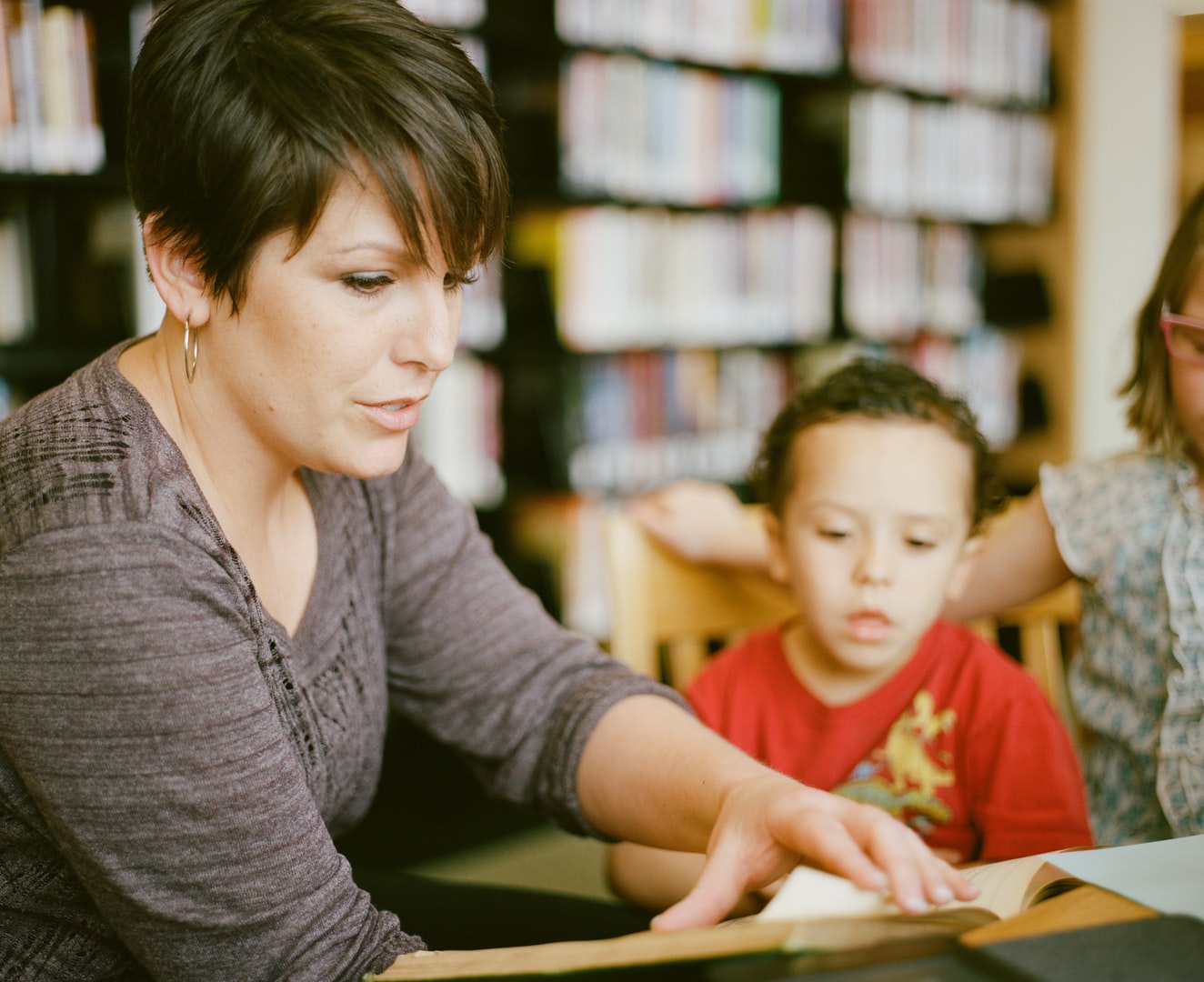
Individualized Instruction
Even in a private school, it can be difficult for teachers to consider individual needs. Homeschooling offers the opportunity for education that is tailored to the student’s age and ability. Homeschooled students can proceed at their own pace and master each step at their own rate.
Homeschooling is an ideal choice for children with special needs because their unique requirements can be completely accommodated. Another homeschooling benefit is the ability to teach around each child’s learning style. This can happen whether the student is doing math, studying science, or reading the classics. Experts generally recognize three basic types of learning styles:
Visual learning style. Visual learners make up around 60-65% of the population, and these students prefer visuals like diagrams, symbols, graphs, and charts.
Auditory learning style. Auditory learners make up about 30% of the population, and they absorb material best by hearing it. They tend to read aloud and do well in oral discussions.
Kinesthetic learning style. Kinesthetic or tactile learners make up around 5% of the population. They learn best by doing: touching, experimenting, moving, or some kind of physical activity.
Choice of Curriculum
When parents are able to choose a curriculum for their children, they can select material that connects with their educational goals, religious beliefs, and family interests. Parents can add subjects that will challenge and interest their children, or fill in gaps where they need more tutoring. How do you choose the right curriculum for your students? Consider these tips:
Set a price limit.
Outline your homeschooling goals.
Choose material that supports your child’s learning style.
Try a sample lesson from the publisher.
Don’t be afraid to change what doesn’t work.
Flexible School Schedule
Most children struggle to function at their best when they are required to sit all day in a classroom. Homeschooling provides a flexible schedule and learning environment. With homeschooling, there are no snow days, teacher conferences, or pandemic cancellations. Your family academy can stay in session all year long, with summer mini-courses, swimming lessons, and county fair art projects that can be added to a rich and varied curriculum.
However, our family’s homeschool days are typically spent doing what looks like “normal school.” I say that to emphasize that homeschooling is not an excuse to neglect education in favor of games, free time, and outdoor play. Homeschooling allows families to supplement their academic learning with excellent, non-traditional educational opportunities such as:
Travel
Family business
Serving and ministry
Community involvement
Art, science, and writing contests
Field trips
Entrepreneurship
Positive Socialization
One of the biggest objections to homeschooling is the concern about socialization. According to the dictionary, socialization is: “the action of mixing socially with others” or “the process of learning to behave in a way that is acceptable to society.”
Every parent wants their child to interact normally with other people, and some people think that home education:
isolates children
hinders kids from making friends
prevents kids from learning approved social behaviors
This concern might be warranted if you were homeschooling your child on a remote iceberg in Antarctica, without the benefit of any other human interaction or internet access.
Instead, homeschooling:
offers a large variety of socialization opportunities
tends to produce children who are not peer-dependent
creates individuals with strong social skills
establishes young people who can interact with many age groups
A study published in the Peabody Journal of Education reported that homeschooled children tend to associate with all kinds of people, show healthy self-esteem, display maturity, and demonstrate excellent leadership skills. The side benefit of homeschooling is the lack of negative socialization in the form of peer pressure, bullying, and damaging social hierarchy that students experience in the public school environment.
Without negative social drama, students can actually focus on learning.
Character and Values
It is no secret that the public school system carries its own values and agenda, and these often do not mesh with the faith-based convictions of some families. Homeschooling offers parents a solid influence in their child’s life that would otherwise be given to the school professionals and classmates. Parents can spend time watching and shaping valuable character in their children.
Let’s face it: when children attend a traditional school, they are out of the home most of the day. For better or worse, their character is being shaped by their teachers and peers. When they get home, how much time of the day is left to notice, much less mold character in children? Another benefit of homeschooling is that it lets parents model, discuss, and train good character and values all day long through everything they do with their children.
Strong Family Relationships
Homeschooling a lively bunch of little ones can be challenging, and there are good days and bad days. (Potty training toddlers while juggling history lessons at the peak of my pregnancy comes to mind.) However, the strong bond that forms by being your child’s teacher is unparalleled:
The parent gets the joy of sharing knowledge, support, assistance, and encouragement through the years of study.
The parent knows exactly what the child is learning.
Key concepts get woven into everything you do together.
Sibling relationships benefit since students are not separated by age and peer group.
Everyone can learn together and each person brings something different to the table.
The basic school schedule is essentially the same for everyone, allowing a family to easily plan and participate together in field trips, travel, and extracurricular events.
Academic Excellence
Studies have shown that homeschooled students often perform better academically than their peers in public school, and tend to score 15 to 30 points higher in standardized testing. Homeschool graduates typically gain higher GPA scores in college and persevere through their college studies longer. Increasingly, home-educated students are being sought after by colleges, who modify their policies and practices to welcome homeschoolers into the admission process.
Productive and Happy Adults
Experts have conducted research on how homeschooled kids turn out as adults. Reports show that a group of 5,000 adults who were home educated for more than seven years were more active socially and more visible in the community than their public schooled peers. A large portion of the group went on to higher education and also rated noticeably high on the happiness scale.
Hidden Benefits
In addition to the major benefits listed above, there are dozens of hidden benefits that are unique to each family. When homeschooling families list all the little benefits they enjoy, they really add up! Some of these include:
sleeping later if your body needs to
living most life hours with the people who love you most
taking vacations in the off-season
scheduling appointments during school hours
no packed lunches or running for the bus
savings on school supplies
no comparing with what the other kids have
no school fundraisers
finishing school early if you are sick or need a break
kids with special needs receive personalized help all day long
you have the same teacher every year who knows your track record
school is flexible and mobile
no bullies or cliques
kids can be active off and on all day long
The Takeaway
Before we were married, my husband and I planned to homeschool. Neither of us was homeschooled ourselves, but we saw the value of it and watched other homeschooling families. However, planning to homeschool is not the same as doing it, and there were plenty of surprises along the way. Looking back over 25 years of homeschooling, some of the biggest takeaways are the following five things:
Formal training is not a homeschooling requirement. My husband and I both have teaching degrees, but formal training does not have a lot to do with homeschooling success. In fact, sometimes this training gets in the way.
Every year, I make mistakes. After many years of homeschooling, I still make mistakes every year, but every new school year is a blank slate. I try to remember my mistakes from the past year and change things up to make the new year a better experience for everyone.
The teacher learns alongside her students. I never knew I would finally learn all of the world histories I never learned in public school (and love it.)
I cannot teach my children every fact in the universe. No student, whether learning at a public, private or home-based school, will master every concept or fact that there is to know. (That’s why we have Google.)
There was one important concept we tried to impart to our children throughout their homeschool education:
Fall in love with learning…and keep doing it the rest of your life!
Best options for children with learning difficulties
What’s The Best Curriculum For Children With Learning Difficultes?
As the new school year approaches, I find I am being asked this question all the time – What’s the best curriculum for children with learning differences?
That first year, I actually thought very little about curriculum (I look back on now and wonder, “What in the world was I thinking?”). I purchased the very first one I heard about from a friend. It had worked well for her family for a couple of years, so I figured it would for us as well.
$800.00 and a whole lotta tears (mine and my boys’) later, I knew better.
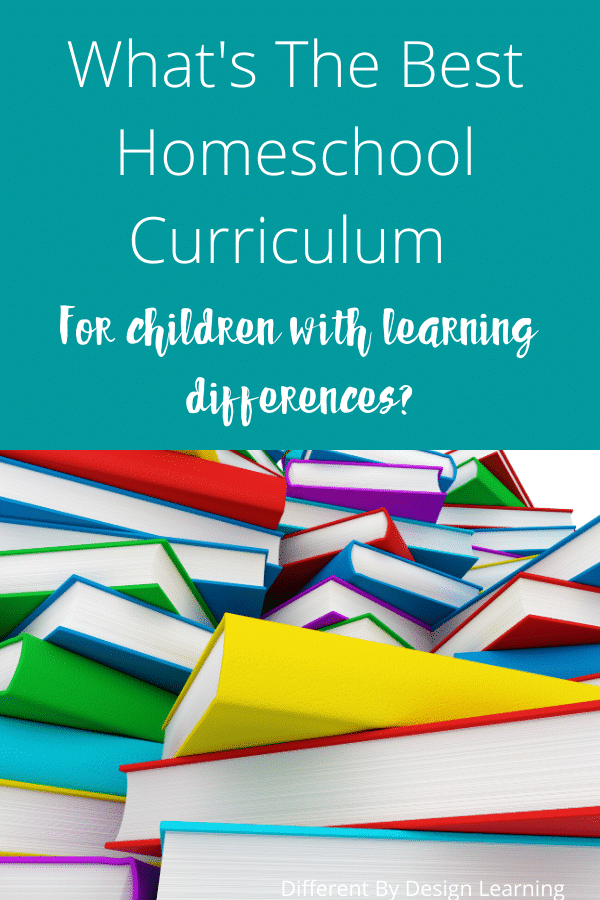
I think every family needs to find the educational resources that work best for their individual needs.
I think this is exponentially true when we are homeschooling children with learning differences and special needs.
The truth is, some programs are just more effective with out-of-the box learners than others. Another truth – finding what works makes life so much easier, for the kids to be sure, but also for their teacher!
With that in mind, today I want to share my basic approach to choosing learning materials and educational programs for my boys.
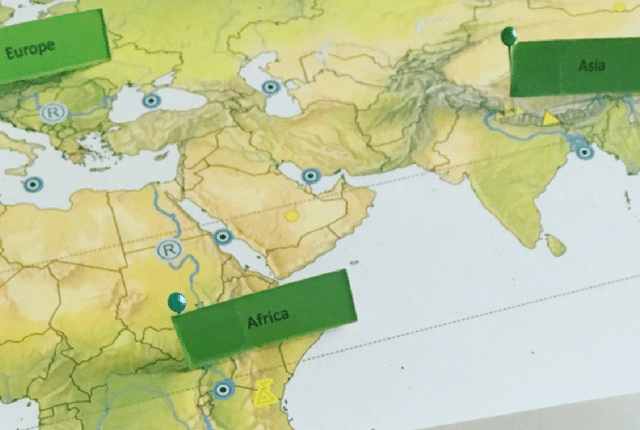
How To Choose Curriculum For Kids With Learning Differences
Table Of Contents
What’s The Best Curriculum For Children With Special Needs?For more on homeschooling children with learning differences and special needs:
FLEXIBILITY IS CRITICAL
The very first thing I look for when considering any new program or supplemental material is how flexible the overall coursework and work flow will be. Any program that schedules lessons to a tee and has mostly worksheets with text, is just simply not going to be the best fit for my boys. (Tip: Often the Teachers Manual will give you more information about how to modify the program than the student pages. I look for things like “Additional activities for Practice” and “Extras” in the manuals – often, the additional activities end up being our primary learning.)
MULTI-SENSORY
Finding a program with a multi-sensory approach, particularly one with hands-on, tactile learning, is critical for my youngest son. In order for him to truly grasp a concept, he usually needs some sort of hands-on interaction with it. The problem is that coming up with new activities and scouring Pinterest for ideas takes a ton of time. If I can find a program that already has it planned out for me, I’m in!
A PATCHWORK QUILT APPROACH
When it comes to a particular subject, I tend to find a variety of options, rather than sticking to a single program.
For example, when my son began US History last year, I selected Beautiful Feet for his primary learning. We loved the program, and also soon added in Pin-It Maps and historic coloring books to help make the learning stick. We also ended up cooking a few period specific foods and taking a field trip to a local history museum.
I call this my Patchwork Quilt for learning. It’s got a lot going on, but once complete, it all works together beautifully and covers what we need it to.
While this may seem costly, the truth is, we move through curriculum slowly when adding in so many extras. A typical year’s worth of coursework may take us two years to complete, so the cost is spread out and more manageable. Also, the best thing about manipulatives and maps is that they last and can be reused again in later learning.
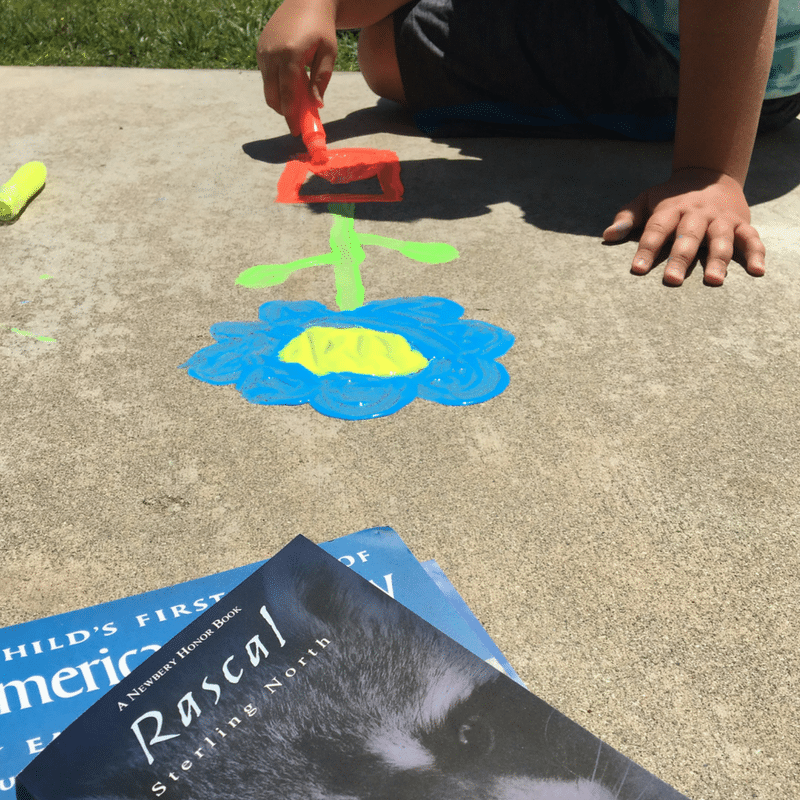
For any child, and particularly one with learning differences, I think grade level is at best, only a suggestion when it comes to selecting the right learning program. My boys are all over the place in terms of where they would actually “test” for typical school grades. The best way I have found to select the right level for my sons is to take a look at sample exercises typically offered by publishers. (I explain much more in this post about our current Language Arts curriculum.)
IT’S NOT THE BOSS, YOU ARE
It’s taken me seven years to learn this (and, honestly, I am still learning it). No matter what, I am the one who decides how we use the curriculum. No book or sample schedule can define what’s best for my family’s progress.
When I start to feel a little nervous about how far we are straying from the initial instruction, I try to look at the end-result. Are my kids progressing? Are they learning? Are they enjoying the activities? If the answers are anywhere near yes, I’m good, no matter how far off the traditional curriculum course we may be.
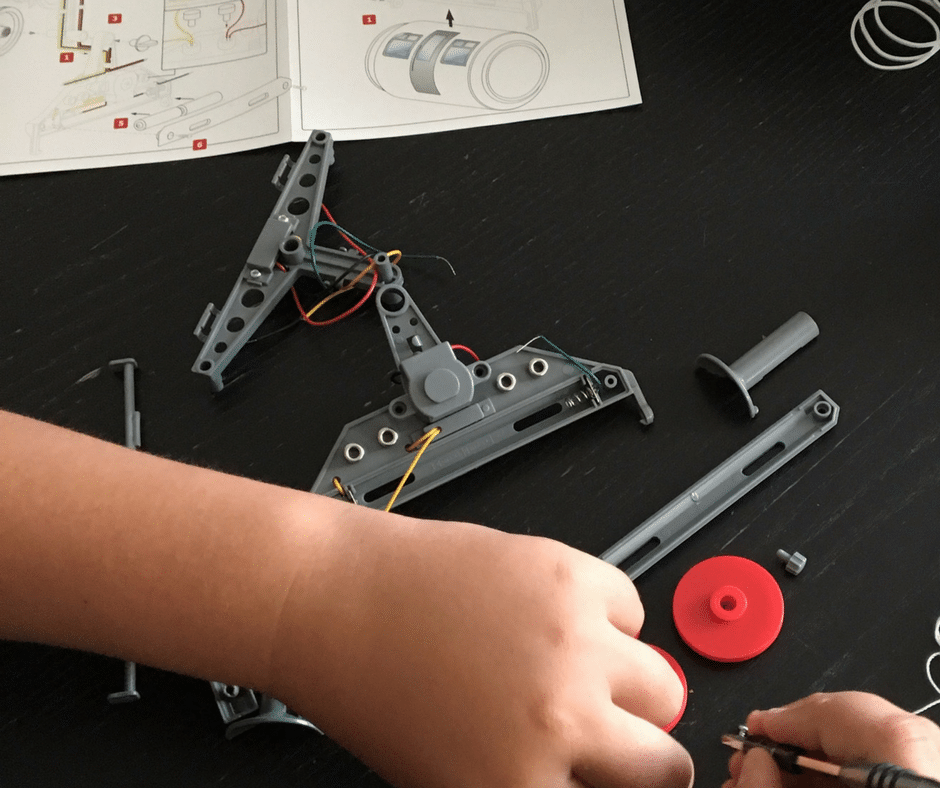
What’s The Best Curriculum For Children With Special Needs?
This is the post I wish I would’ve read that first year when it seemed like we were doomed to fail and had no idea how to make this homeschool thing actually work for my children. I spent way too much time worrying about “doing it right” and checking all the boxes. Not only was it not serving my boys well, but none of us were having any fun at all.
The very best curriculum for any child, and especially one with special needs, is the one that works best with his or her strengths and interests.
Loosening my curriculum expectations and allowing myself to just find the products that make sense for my learners, has lifted a huge weight off of my shoulders.
It has allowed us to latch on to learning in a way that inspires enthusiasm and brings joy.
For more on homeschooling children with learning differences and special needs:
Special Needs Curriculum: Where To Start
5 Tips For Homeschooling A Resistant Learner
10 Must Read Books For Parenting A Child With Special Needs
Hands-On Learning and Movement for the Struggling Learner
Post navigation
This Is What Happens When Your Child Has Both Medical And Behavioral Health Diagnoses
Online Homeschool Classes And Your Child With Special Needs
LINKS FOR MORE iNFORMATION
FROM THIS aUTHOR
FROM THIS aUTHOR

This is a FAQ description. Add more detail about this service, such as benefits, appearance, components and value
Media Based Modern Options
Individually Paced
PBS KIDS Self-Paced Learning
PBS KIDS offers this FREE special collection of flexible self-paced learning to help inspire PreK-2 teachers and provide support for the classroom. Choose from a variety of learning topics designed to spark new ideas and expand your skill set for engaging children and families with educational media. You may also be able to earn between one to three credit hours.
Explore our Learning Paths, a series of short microlearning modules (15-minute, skill-based experiences in a range of interactive formats) that can lead to a certificate.
Enseñando Ciencia temprana con la colección Changing Seasons
Con las herramientas de PBS KIDS, explore formas de integrar planes…
Grades PreK-K, K-2
Teaching Early Science with the Changing Seasons Collection | PBS KIDS Self-Paced Learning
With tools from PBS KIDS, explore ways to integrate media-rich lesson…
Grades PreK-K, K-2
Supporting Dual Language Learners | PBS KIDS Self-Paced Learning
Get the facts on the power of bilingualism for young children!…
Grades PreK-K, K-2
Spark Learning with Daniel Tiger's Neighborhood | PBS KIDS Self-Paced Learning
Media can spark children's curiosity, conversations, and play! Discover…
Create Media with PBS KIDS ScratchJr | PBS KIDS Self-Paced Learning
Creating media is an important part of early media literacy…
Grades PreK-K, K-2
Document Learning with Elinor Wonders Why | PBS KIDS Self-Paced Learning
With tools and materials you already have and early…
Grades PreK-K, K-2
Model Learning with Odd Squad | PBS KIDS Self-Paced Learning
With math-based resources from PBS KIDS, explore how characters and…
Grades PreK-K, K-2
Share Media with Peg + Cat | PBS KIDS Self-Paced Learning
Explore developmentally-appropriate ways to integrate media and digital…
Grades PreK-K, K-2
Connecting with Families | PBS KIDS Self-Paced Learning
To fully support a child's development, strong communication between…
Grades PreK-K, K-2
Teach with Informational Text | PBS KIDS Self-Paced Learning
Learn about the purpose of Informational Text and discover how the…
Grades PreK-K, K-2
Early Engineering with Ready Jet Go! | PBS KIDS Self-Paced Learning
With real-life materials and exciting tools to touch and…
Grades PreK-K, K-2
Explore Media and Wild Kratts | PBS KIDS Self-Paced Learning
Enhance children’s learning by integrating media into your lessons!…
Grades K-2
PEEP Science Teaching Strategies for Center-Based Preschool Educators
In this one-hour, self-paced training, you will learn key…
Supporting Play with Technology and Media
Explore your beliefs and understandings about technology and interactive media use, and…
K-2 Science Tips: Energy & Motion
In this self-paced course you will be introduced to inquiry-based and connected learning…
K-2 Science Tips: Animal Adaptations
In this self-paced course you will be introduced to inquiry-based and connected learning…
PEEP Estrategias de enseñanza de ciencias para educadores de cuidado infantil familia
La capacitación es parte de un conjunto de recursos educativos…
Grades PreK-K
PEEP Science Teaching Strategies for Family Child Care Educators
In this one-hour, self-paced training, you will learn key…
Grades PreK-K
Thinking and Making with Media in PreK-2 Classrooms
Intentional and developmentally-appropriate use of media provides children…
Explore - Wonder - Learn
Superscript
OUR LEARNING AT HOME NETWORK LINKS
This is a frequently asked question?
This is a FAQ description. Add more detail about this service, such as benefits, appearance, components and value
This is a frequently asked question?
This is a FAQ description. Add more detail about this service, such as benefits, appearance, components and value
This is a frequently asked question?
This is a FAQ description. Add more detail about this service, such as benefits, appearance, components and value
This is a frequently asked question?
This is a FAQ description. Add more detail about this service, such as benefits, appearance, components and value
This is a frequently asked question?
This is a FAQ description. Add more detail about this service, such as benefits, appearance, components and value